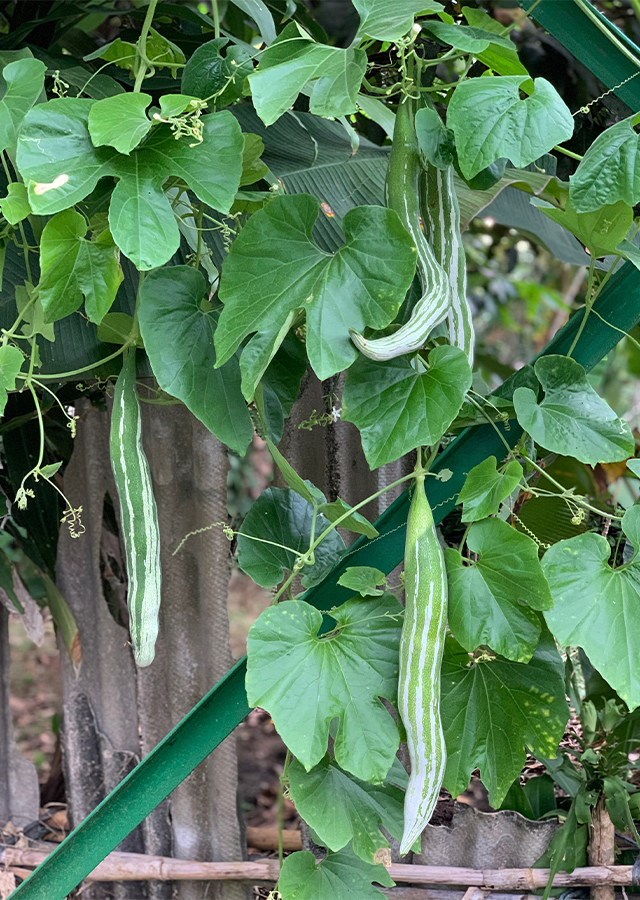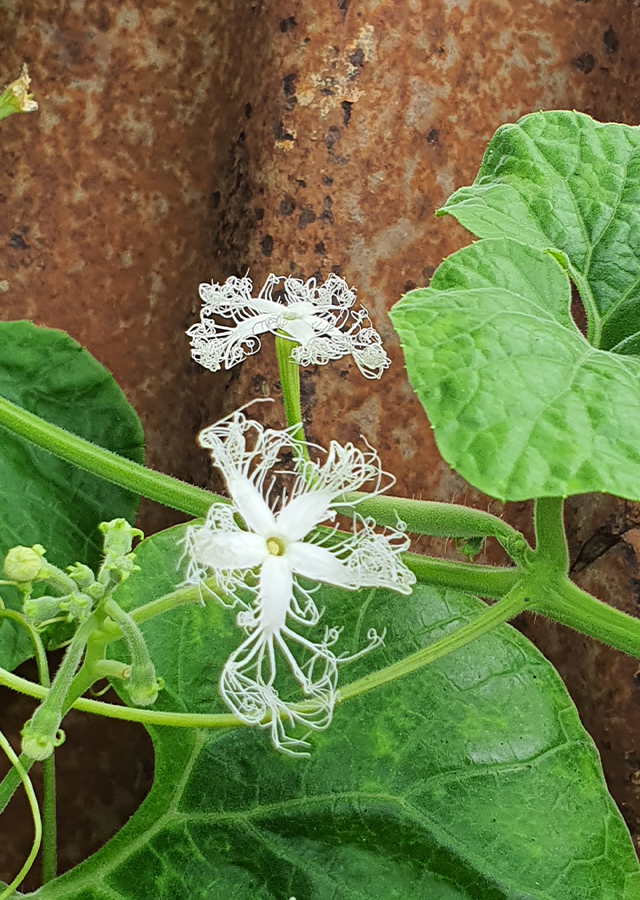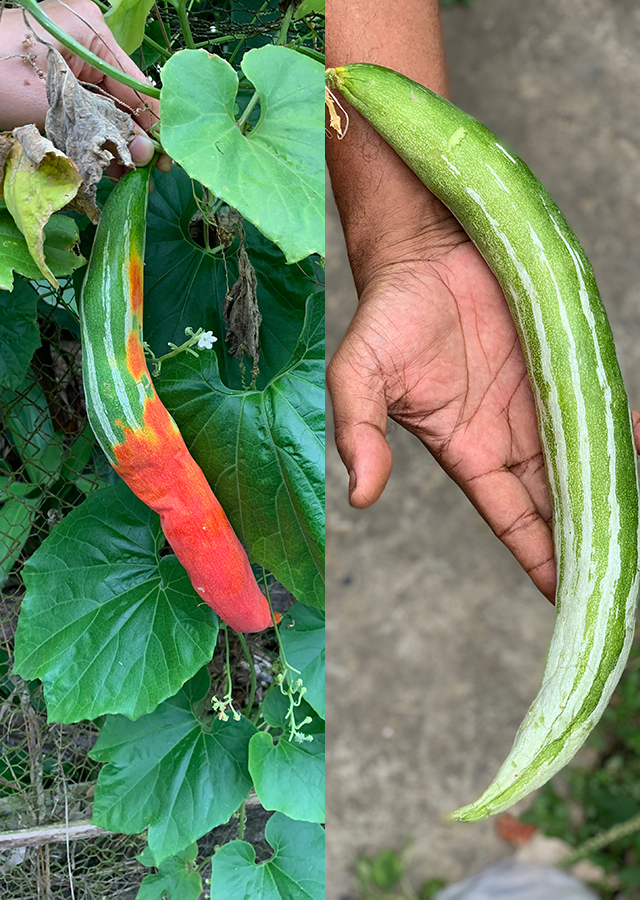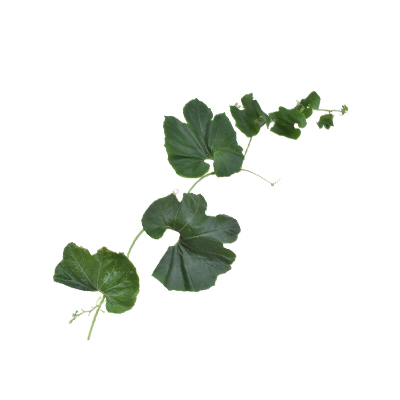Snake Gourd
Trichosanthes cucumerina L.
Cucurbitaceae
Location in our garden
Vegetable



Synonym
Anguina anguina (L.) Huth
Anguina cucumerina (L.) Kuntze
Cucumis anguinus (L.) L.
Habitus
Climbers. A monoecious and vigorous climbing annual herb.
Part Used
Leaves
Seeds
Fruit
Roots
Growing Requirements
Full Sunshine
Need Shade
Habitat
Forest
Mountains
Shrublands
Overview
In South and Southeast Asia, including Bangladesh, India, Sri Lanka, Pakistan, Nepal, Myanmar, Malaysia and Southern China, the Snake gourd is found wild. It is part of Northern Australia and has been naturalized in Florida, the Indian and Pacific Ocean Islands, and parts of Africa. Snake gourd is not commonly known worldwide, but for thousands of years, some cultures have used it in a number of specific foods.
Vernacular Names
Haarblume (German), Paduvalakaayi (Canada), Anggwi nabaem oi (Korea), Petola ular (Rusia), Yilan kabağı (Turkey), She gua (Chinese), Mak ngo ngieo (Laos)
Agroecology
Grows up to 1,500 m in the tropics and best in regions where annual daytime temperatures range from 22 to 35 ° C, but can withstand 14 to 38 ° C. It prefers an average annual precipitation of 2,000 to 2,500 mm, but tolerates 700 to 4,200 mm. Prefers a sunny location, tolerating light pH shade in the 6.5 to 7 range, tolerating 6 to 8. Intolerant to drought, plants are. In the growing season, it needs fertile, well-drained soil and plenty of moisture.
Morphology
- Roots - Whitish and tuberous roots.
- Stems - Angled, furrowed, green.
- Leaves - Simple, alternate, palmately 5 to 7 lobed leaves measuring 7 to 25 cm by 8 to 20 cm with dentate margins.
- Flowers - sessile, solitary, white. Flower season on July to September.
- Seed - 1 to 1.5 mm thick brown, semi to ellipsoid.
- Fruit - Soft skinned, cylindrical long, 30 to 180 cm by 5 to 10 cm. Fruit color is greenish to white or green, orange to red. Fruit taste is bitter.
Cultivation
- It is propagated by in situ sowing of the generative seed used. In a sunny place, it germinates best.
- Immature fruits can be harvested approximately two months after the seed has been sown, and cultivation can continue for up to four months.
- Traditional cultivars can produce between 6 and 10 fruits per year while some enhanced ones can produce up to 50 fruits per year.
Chemical Constituents
Pyridoxine, thiamin, riboflavin, minerals, panthothenic, ascorbic acid, niacin, lignin, lycopene, oxalate and quercetine.
Traditional Medicinal Uses
- To treat coughing, the inner pulp of the fruit is turned into a syrup.
- Anthelmintic, emetic and purgative, and vermifuge are known to be the berries.
- The seed is said to be cooling.
- Healthy benefits of Snake Gourd are to lower fever, diabetic treatment, prevent heart ailments, eliminate toxins, respiratory health, hair health, prevent liver problems, lower acidity, skin care, prevent cancer.
- For the removal of intestinal worms, roots are used.
- Roots are used in China to treat diabetes, skin problems like furuncles and boils. An abortifacient is used for peptides in the plant.
- Leaf juice is rubbed over the liver in Konkan (India) for the treatment of liver congestion, helping to relieve constipation by cleaning the intestines.
- An infusion prepared with coriander seeds and snake gourd leaves is an aid to reduce the levels of bilirubin to counteract jaundice.
- Snake gourd is used in Ayurveda to treat liver disorders, to eliminate constipation, vitiated pitta, burning sensation, diseases of the skin, anorexia, diabetes, constipation, flatulence, fever, infestation of worms and general weakness.



